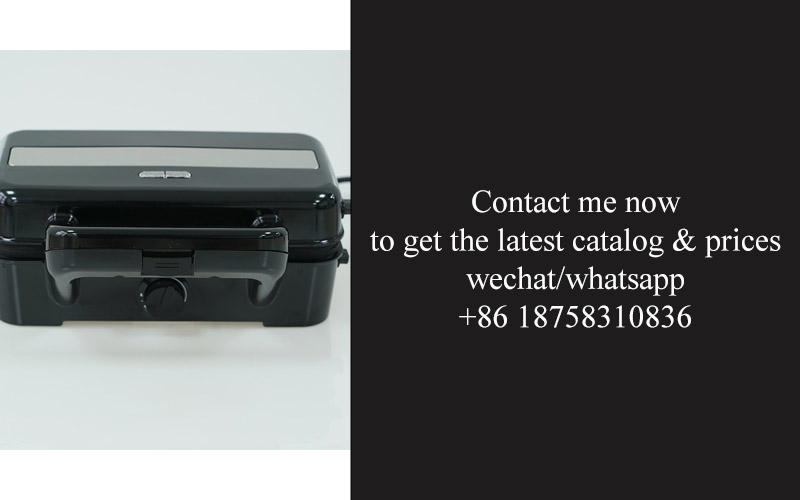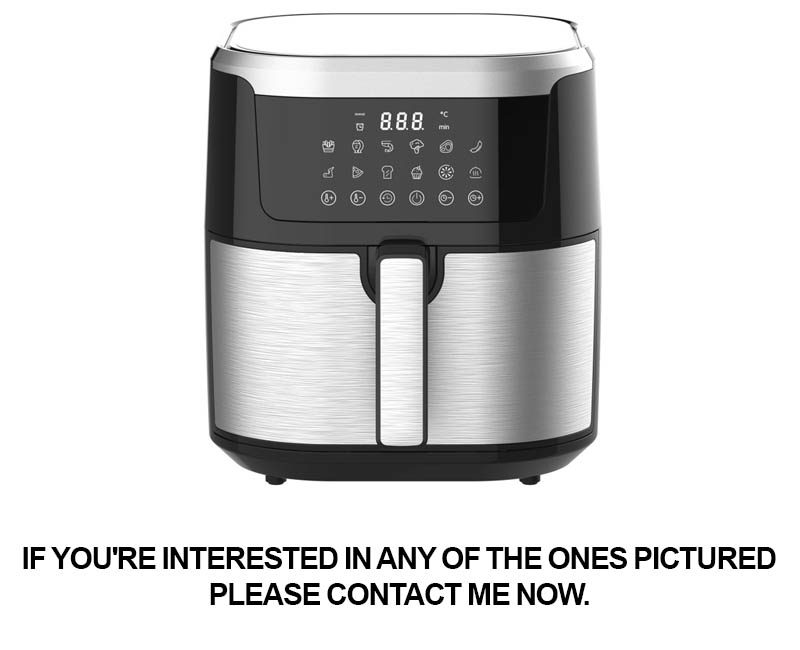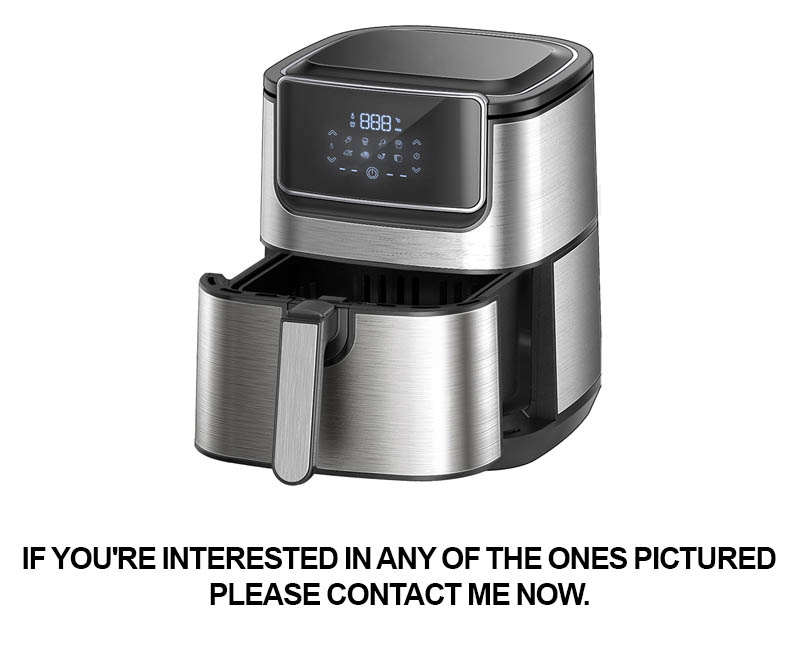Address
304 North Cardinal
St. Dorchester Center, MA 02124
Work Hours
Monday to Friday: 7AM - 7PM
Weekend: 10AM - 5PM
Address
304 North Cardinal
St. Dorchester Center, MA 02124
Work Hours
Monday to Friday: 7AM - 7PM
Weekend: 10AM - 5PM

In this ever-evolving world, where technology intertwines with daily life, the kitchen has emerged as a hub of innovation and efficiency. As we delve into the realm of kitchen appliances, it becomes apparent that the future holds immense potential and opportunities. From sleek designs to cutting-edge technology, the kitchen appliance industry is shaping up to revolutionize the way we cook, clean, and entertain. Join us as we explore the dynamic landscape of kitchen appliances and uncover the secrets to embracing the future with confidence.
The DDP Hamburg concept is a game-changer in the global trade landscape, particularly within the kitchen appliance industry. DDP, which stands for Delivered Duty Paid, is an international shipping term that simplifies the logistics process for businesses and consumers alike. In essence, it means that the seller takes full responsibility for the transportation and import duties of the goods until they reach the buyer’s doorsteps.
Under the DDP Hamburg model, suppliers ensure that the products are delivered to the buyer’s specified destination, cleared through customs, and all associated taxes and duties are paid. This eliminates the complexities often encountered in international trade, such as customs brokerage, import taxes, and potential delays. For kitchen appliance manufacturers and distributors, this streamlined process offers several key benefits.
Firstly, it enhances customer satisfaction. By removing the burden of customs clearance and import taxes from the buyer, the DDP Hamburg model ensures a seamless and worry-free experience. Customers can receive their kitchen appliances without the hassle of dealing with complex import procedures, making the purchasing process more straightforward and convenient.
Secondly, it reduces the risk of customs issues. When suppliers handle the customs clearance, they are well-versed in the regulations and requirements of the importing country. This minimizes the chances of delays or complications that could arise from incorrect documentation or non-compliance with local laws.
The DDP Hamburg model also provides cost advantages. By consolidating the shipping, insurance, and customs costs into a single, all-inclusive fee, suppliers can offer more competitive pricing to their customers. This can be particularly beneficial for small and medium-sized enterprises (SMEs) that may not have the resources to navigate the complexities of international trade alone.
In the kitchen appliance industry, where innovation and quality are paramount, the DDP Hamburg concept allows manufacturers to focus on what they do best—creating cutting-edge products. They can rely on experienced suppliers to manage the logistical aspects, ensuring that their appliances reach the market efficiently and effectively.
Furthermore, the DDP Hamburg model fosters a more transparent and predictable supply chain. Suppliers provide detailed information about the shipping process, delivery timelines, and costs upfront, which helps buyers plan their inventory and sales strategies accordingly. This level of transparency builds trust and strengthens the relationship between suppliers and buyers.
Hamburg, as a port city, has long been a hub for international trade. Its strategic location in Northern Germany, with easy access to major European markets, makes it an ideal gateway for suppliers looking to export their products. The port’s advanced infrastructure and efficient customs procedures contribute to the smooth operation of the DDP Hamburg model.
For OEMs (Original Equipment Manufacturers) in the kitchen appliance industry, the DDP Hamburg concept offers a unique opportunity to collaborate with local suppliers. These suppliers often have a deep understanding of the market and can provide valuable insights into consumer preferences and emerging trends. By working together, OEMs can tailor their products to meet the specific needs of European and American consumers.
Moreover, the DDP Hamburg model encourages innovation in product design and technology. With a clear focus on delivering high-quality appliances to a global market, suppliers are motivated to invest in research and development. This results in a continuous stream of new and improved kitchen appliances that cater to the evolving demands of consumers.
In conclusion, the DDP Hamburg concept is more than just a shipping term; it’s a strategic approach to international trade that benefits all parties involved in the kitchen appliance industry. By simplifying the logistics process, reducing costs, and fostering innovation, DDP Hamburg is poised to become an even more integral part of the global supply chain.

In recent years, there has been a significant surge in the demand for European and American kitchen appliances. This trend is driven by a combination of factors, including changing consumer lifestyles, technological advancements, and a growing appreciation for quality and design.
Consumers are increasingly seeking out appliances that not only offer functionality but also reflect their personal style and taste. European brands, known for their sleek designs and high-quality materials, have become a sought-after choice. From the minimalist aesthetics of Scandinavian appliances to the classic elegance of Italian designs, these brands are setting the standard for modern kitchens.
The integration of smart technology in kitchen appliances has also played a pivotal role in the rising demand. Smart ovens, refrigerators, and dishwashers are becoming more prevalent as homeowners look to streamline their cooking and cleaning processes. The ability to control appliances remotely, monitor food safety, and save energy through smart features is highly appealing to tech-savvy consumers.
American brands, on the other hand, are gaining popularity for their innovative features and robust performance. The emphasis on durability and reliability has made American appliances a reliable choice for those who prioritize long-term investment over cost. From commercial-grade ranges to high-efficiency washers, American brands are catering to a diverse range of needs and preferences.
As people spend more time at home, the kitchen has become a central hub for entertainment and socializing. This shift has led to an increased interest in appliances that can enhance the overall kitchen experience. For instance, wine refrigerators, coffee makers with customizable settings, and multi-functional cooktops are becoming must-have items for many homeowners.
The kitchen is also a place where sustainability is gaining traction. Eco-friendly appliances that are energy-efficient and have a lower carbon footprint are attracting environmentally conscious consumers. Brands that offer appliances with recyclable materials, energy-saving modes, and water-saving technologies are leading the charge in this area.
Cultural exchange and globalization have also played a role in the popularity of European and American kitchen appliances. As people travel more and experience different cuisines, they often bring back a desire to recreate those flavors and experiences in their own homes. This has led to a demand for appliances that can handle a wide range of cooking techniques and ingredients.
Additionally, the rise of online shopping has made it easier for consumers to access international brands. With just a few clicks, customers can now purchase top-of-the-line appliances from across the globe, eliminating geographical barriers and expanding their options.
The trend towards health and wellness is another factor driving the demand for European and American kitchen appliances. As people become more health-conscious, they are looking for appliances that can help them prepare nutritious meals more efficiently. This includes appliances that can maintain the integrity of ingredients, such as slow cookers, air fryers, and high-quality blenders.
In conclusion, the demand for European and American kitchen appliances is on the rise due to a mix of design aesthetics, technological innovation, sustainability concerns, cultural influences, and changing consumer behaviors. As the kitchen continues to evolve into a multifunctional space, the role of these appliances in enhancing daily life is becoming more significant than ever before.

In the ever-evolving landscape of the kitchen appliance sector, OEM suppliers play a pivotal role in shaping the industry’s direction and innovation. These specialized firms are the unsung heroes behind the branded products that consumers see on store shelves. Let’s delve into the multifaceted role that OEM suppliers play in this dynamic market.
OEM suppliers are the architects of custom solutions, tailoring appliances to meet the unique specifications of their clients. Whether it’s a sleek design for a high-end brand or a durable, cost-effective model for a mass-market product, these suppliers ensure that the final product aligns with the brand’s identity and customer expectations.
The quality control process is another cornerstone of an OEM supplier’s role. They are meticulous in ensuring that every component and assembly meets the highest standards. This dedication to quality is crucial in maintaining the reputation of the brands they work with, especially in the kitchen appliance sector where safety and reliability are paramount.
Innovation is at the heart of the OEM model. Suppliers are constantly pushing the boundaries of technology to develop new features and functionalities that can set their clients’ products apart from the competition. From energy-efficient motors to smart integration capabilities, these suppliers are the driving force behind the cutting-edge appliances that are becoming increasingly popular in modern kitchens.
The ability to scale production is a key advantage that OEM suppliers offer. They have the infrastructure and expertise to handle large volumes of orders, which is essential for brands looking to enter new markets or expand their product lines. This scalability ensures that the supply chain remains efficient and that products are available to consumers when they need them.
Cost management is another critical aspect of the OEM supplier’s role. They work closely with their clients to find the most cost-effective solutions without compromising on quality. This might involve sourcing materials from different suppliers, optimizing manufacturing processes, or finding innovative ways to reduce waste.
Collaboration is a cornerstone of the OEM relationship. Suppliers often work closely with their clients to understand market trends and consumer needs. This partnership allows for a more agile approach to product development, ensuring that appliances are not only functional but also in tune with the latest consumer demands.
The global nature of the kitchen appliance sector means that OEM suppliers must navigate complex supply chains and adhere to a variety of international regulations. They must ensure that their products meet safety standards, environmental regulations, and local customs requirements in every market they serve.
Customization is also a significant part of the OEM equation. Many brands offer a range of products that cater to different market segments, and OEM suppliers are adept at creating customized solutions that can be easily adapted to meet these diverse needs. This flexibility is essential for brands looking to offer a wide product portfolio.
In addition to the technical aspects, OEM suppliers also provide value through their after-sales support. They often handle warranty claims and repairs, which helps maintain the brand’s reputation and customer satisfaction. This level of service is particularly important in the kitchen appliance sector, where the longevity of the product is a key concern for consumers.
The role of OEM suppliers in the kitchen appliance sector is multifaceted, encompassing everything from design and engineering to production, quality control, and after-sales service. Their ability to adapt to market changes, innovate, and deliver high-quality products on a large scale is what makes them indispensable partners for brands aiming to succeed in a competitive and rapidly evolving industry.

DDP Hamburg stands as a beacon for kitchen appliance Original Equipment Manufacturers (OEMs), offering a strategic advantage in a competitive global market. Its unique position at the crossroads of Europe and its robust infrastructure make it an ideal gateway for OEMs seeking to expand their reach and streamline their operations.
In the heart of Germany, DDP Hamburg boasts a state-of-the-art port that serves as a pivotal point for international trade. This port’s efficiency and connectivity have made it a preferred destination for companies looking to export and import kitchen appliances. For OEMs, this means a streamlined process from production to delivery, reducing transit times and costs.
The city of Hamburg itself is a hub of innovation and design, with a culture that values quality and craftsmanship. This ethos is reflected in the kitchen appliance sector, where OEMs find a fertile ground for collaboration and inspiration. The local design schools and R&D centers are a treasure trove of talent and ideas, fostering a collaborative environment that can propel OEMs’ products to new heights.
One of the key strengths of DDP Hamburg is its logistics network. The port’s advanced facilities and its integration with the broader German transportation system ensure that OEMs can manage their supply chains with precision and agility. This is particularly crucial in the kitchen appliance industry, where just-in-time delivery is often a necessity to meet customer demand without excess inventory.
Moreover, Hamburg’s strategic location in Northern Europe provides OEMs with easy access to key markets. Whether it’s the Scandinavian countries known for their eco-friendly designs, the United Kingdom with its diverse consumer base, or the rest of Europe hungry for high-quality appliances, DDP Hamburg offers a gateway to these markets with minimal hassle.
For OEMs, the cost savings are hard to overlook. By leveraging DDP Hamburg, companies can avoid the complexities of international shipping, customs, and duty payment. This not only simplifies the logistics process but also reduces the overall cost of doing business. In an industry where margins can be thin, this efficiency is a significant competitive advantage.
The city’s infrastructure is not just about logistics; it’s also about the local expertise that OEMs can tap into. Hamburg’s long-standing reputation in engineering and manufacturing means that OEMs can find local suppliers and partners who understand the nuances of producing high-quality kitchen appliances. This local know-how can be invaluable in developing new products, improving existing ones, and ensuring that every aspect of the manufacturing process meets the highest standards.
Additionally, DDP Hamburg’s close proximity to key suppliers and manufacturers means that OEMs can source components and materials more quickly and cost-effectively. This agility is particularly important in a sector where innovation is a constant and the ability to respond to market trends swiftly can mean the difference between market leadership and obscurity.
The environmental considerations are also a significant factor. With a growing emphasis on sustainability, OEMs at DDP Hamburg can benefit from the region’s commitment to green practices. The local government and businesses are dedicated to reducing carbon footprints, which resonates with consumers who are increasingly conscious of their ecological impact.
Finally, the collaborative spirit of DDP Hamburg is unmatched. The port is not just a physical location but a community of businesses that support each other. This collaborative environment encourages knowledge sharing and innovation, creating a synergy that can help OEMs stay ahead of the curve.
In conclusion, DDP Hamburg is more than just a logistics hub; it’s a strategic partner for kitchen appliance OEMs. Its combination of efficient logistics, innovative design culture, cost-effective operations, and collaborative spirit makes it an indispensable asset for companies looking to thrive in a dynamic and competitive global market.

Smart Integration: Modern kitchen appliances are increasingly incorporating smart technology, allowing for seamless integration with smartphones and home automation systems. From smart ovens that can be controlled remotely to refrigerators that track food spoilage, the integration of smart features has become a cornerstone of kitchen innovation.
Energy Efficiency Push: As environmental concerns grow, manufacturers are focusing on energy-efficient designs. This includes appliances that consume less electricity, such as induction cooktops and LED lighting in microwaves. Innovations like these not only reduce utility bills but also minimize the carbon footprint.
Interactive User Interfaces: The rise of touchscreens and voice-activated assistants has transformed the way users interact with kitchen appliances. Smart refrigerators with built-in screens provide recipe suggestions, while oven ranges with intuitive touch interfaces make cooking more user-friendly for all skill levels.
Customization and Personalization: Customization is no longer just for cars or fashion—it’s also making its way into kitchen appliances. Users can now choose from a variety of finishes, colors, and sizes to match their kitchen decor. Some brands even offer personalized settings that adapt to individual cooking habits and preferences.
Modular and Expandable Systems: Designers are exploring modular approaches that allow consumers to add or upgrade appliances as needed. This means a kitchen can start with a basic setup and grow with the owner’s changing needs, reducing waste and offering greater flexibility.
Health and Safety Features: Kitchen appliances are not just about convenience; they’re also about safety and health. Features like built-in air filtration systems in ranges and ovens, non-toxic materials in cookware, and child-proof locks are becoming standard as consumers seek healthier and safer kitchen environments.
Advanced Cooking Technologies: The introduction of new cooking technologies is revolutionizing how we prepare meals. Induction cooktops heat food faster and more evenly than traditional electric or gas burners. Multi-function ovens can broil, bake, and roast simultaneously, offering a level of versatility that traditional appliances cannot match.
Energy Recovery Systems: In an effort to reduce waste and save energy, some appliances now include energy recovery systems. For example, certain dishwashers can capture the heat from the wash cycle to dry dishes more efficiently, reducing energy consumption and shortening drying times.
Eco-Friendly Materials: The use of sustainable and eco-friendly materials in kitchen appliances is gaining traction. Recycled plastics, biodegradable plastics, and materials that are easier to recycle are being incorporated into the design and construction of appliances, reflecting a growing commitment to environmental responsibility.
Connectivity and Data-Driven Insights: With the advent of the Internet of Things (IoT), kitchen appliances are becoming more connected than ever. These devices can now communicate with each other and provide users with data-driven insights, such as energy consumption reports and maintenance reminders.
Accessibility: Innovations in design are also making kitchen appliances more accessible to people with disabilities. Features like voice-controlled appliances and easy-to-grip handles are becoming more common, ensuring that everyone can enjoy the convenience of modern kitchens.
Revolutionary Cleaning Solutions: The cleanliness of kitchen appliances is a critical aspect of modern kitchen design. Innovations in self-cleaning technology, such as steam cleaning cycles and self-cleaning ovens, are reducing the time and effort required to maintain a clean kitchen environment.
Water-Saving Technology: As water scarcity becomes a global concern, kitchen appliances are being designed to use less water. Water-saving dishwashers and faucets with flow regulators are examples of how appliances can contribute to water conservation efforts.
Sustainability at Every Level: From design to disposal, the focus on sustainability is integral to kitchen appliance innovation. Brands are now considering the entire lifecycle of their products, from sourcing materials to recycling at the end of their useful life, to ensure minimal environmental impact.

In the ever-evolving landscape of the kitchen appliance sector, leveraging industry trends and data analysis has become a cornerstone for companies seeking to stay ahead of the curve. This strategic approach allows businesses to anticipate market shifts, refine product offerings, and ultimately, meet consumer needs with precision. Let’s delve into the ways in which these insights are shaping the industry.
Understanding Market DynamicsThe first step in leveraging industry trends is to gain a comprehensive understanding of market dynamics. This involves analyzing consumer behavior, purchasing patterns, and the latest market research. By examining these factors, companies can identify emerging trends that might influence the direction of kitchen appliance design and technology.
Consumer PreferencesConsumer preferences play a pivotal role in shaping the kitchen appliance market. As lifestyles change, so do the expectations of what a modern kitchen appliance should offer. Data analysis helps in pinpointing these preferences, whether it’s the growing demand for smart appliances, energy efficiency, or innovative cooking features.
Technology IntegrationThe integration of technology into kitchen appliances is a trend that shows no signs of slowing down. From touchscreens to voice-activated controls, the industry is witnessing a seamless blend of technology and functionality. Data analysis can highlight the adoption rates of these technologies, helping manufacturers to focus on what truly resonates with consumers.
Sustainability and Energy EfficiencySustainability has become a key concern for consumers and businesses alike. Data analysis can reveal how energy-efficient appliances are performing in the market and how they are being received by environmentally conscious consumers. This information is crucial for OEMs looking to develop appliances that align with global sustainability goals.
Product Lifecycle ManagementUnderstanding the lifecycle of a product is essential for kitchen appliance OEMs. Data analysis allows companies to track the performance of their products over time, from initial design to end-of-life. This helps in making informed decisions about product upgrades, repairs, and replacements.
Competitor AnalysisCompetitor analysis is a critical aspect of leveraging industry trends and data. By examining the strategies, product lines, and market positioning of competitors, OEMs can identify gaps in the market and opportunities for differentiation. This insight can lead to the development of unique selling propositions (USPs) that set a brand apart.
Regulatory ComplianceRegulatory compliance is a complex issue in the kitchen appliance sector. Data analysis can help OEMs stay abreast of changing regulations, ensuring that their products meet all necessary standards. This proactive approach not only avoids legal issues but also builds trust with customers who value compliance.
Sales and DistributionSales and distribution channels are constantly evolving. Data analysis can provide valuable insights into which channels are most effective in reaching target markets. This knowledge can help OEMs optimize their sales strategies and distribution networks to maximize market penetration.
Customer Support and FeedbackCustomer support and feedback are invaluable sources of data that can inform product development. Analyzing customer service interactions and feedback can reveal common issues, preferences, and areas for improvement. This direct feedback loop is essential for OEMs aiming to enhance customer satisfaction and loyalty.
Globalization of the MarketThe kitchen appliance market is becoming increasingly global. Data analysis can help OEMs navigate international markets by identifying cultural nuances, local preferences, and regulatory differences. This enables companies to tailor their products and marketing strategies to diverse global audiences.
Strategic PartnershipsStrategic partnerships can be forged through the use of industry trends and data analysis. By identifying potential partners who share similar values or target markets, OEMs can create synergistic relationships that drive innovation and market expansion.
Innovation and Research and DevelopmentInvesting in innovation and R&D is crucial for staying competitive. Data analysis can guide R&D efforts by highlighting emerging technologies and market gaps. This strategic focus ensures that products are not only cutting-edge but also in line with market demands.
In conclusion, leveraging industry trends and data analysis is a multifaceted approach that benefits kitchen appliance OEMs in numerous ways. From understanding market dynamics and consumer preferences to navigating regulatory landscapes and driving innovation, these insights are the bedrock of successful product development and business strategy.

In one instance, a small German kitchen appliance manufacturer found itself at a crossroads. With the market saturated and competition fierce, they turned to DDP Hamburg for a lifeline. The company’s innovative product, a compact induction cooktop, was catching the eye of potential buyers, but distribution challenges were holding them back. Enter DDP Hamburg, offering a seamless solution that included logistics, customs clearance, and delivery to the final customer. The manufacturer’s sales soared as the DDP model streamlined operations and reduced the risk of delays.
Another story unfolds with a leading American brand known for its high-end kitchen appliances. They were facing a significant opportunity in the European market but struggled with the complexities of local regulations and supply chain logistics. DDP Hamburg stepped in, providing a localized approach that catered to the unique needs of the European consumer. The result was a smooth entry into new markets, with the brand enjoying increased sales and a positive brand image.
A family-owned Italian company specializing in handcrafted kitchenware faced a challenge: how to expand into international markets without the necessary infrastructure. DDP Hamburg was their gateway to success. By handling the entire process from production to delivery, the company was able to focus on what they do best—crafting exquisite pieces. The DDP model allowed them to reach customers worldwide, ensuring their products were delivered with care and precision.
In a different scenario, a large Korean kitchen appliance brand sought to enhance its presence in the European Union. They partnered with DDP Hamburg to manage their supply chain, ensuring compliance with EU standards and regulations. This strategic move enabled the brand to enter new markets with ease, as DDP Hamburg’s expertise in navigating the complexities of international trade made the process seamless.
A Dutch startup, known for its eco-friendly kitchen appliances, faced the daunting task of establishing a distribution network across Europe. With DDP Hamburg, they found a reliable partner that not only managed the logistics but also provided valuable insights into market trends. The startup’s commitment to sustainability resonated with European consumers, and DDP Hamburg’s support helped them grow their market share quickly.
In a case that highlights the versatility of DDP Hamburg, a French company specializing in smart kitchen technology faced a unique challenge. They needed to distribute their products to remote areas in Europe, where traditional logistics were impractical. DDP Hamburg’s flexible approach allowed them to reach these locations, ensuring that their innovative smart kitchen appliances were accessible to all consumers, regardless of location.
A British company known for its high-quality bakeware and kitchenware wanted to expand into the American market. They turned to DDP Hamburg for assistance, and the partnership was a game-changer. DDP Hamburg’s in-depth knowledge of both markets ensured that the company’s products were not only compliant with American regulations but also well-positioned for success. The company’s sales in the US market surged as a result.
In a story that showcases the global reach of DDP Hamburg, a Japanese kitchen appliance brand sought to tap into the African market. They faced language barriers and cultural differences, but DDP Hamburg’s international experience made the process seamless. The brand’s products were successfully distributed across various African countries, leading to a significant increase in sales and a new market presence.
A Swedish company specializing in ergonomic kitchen appliances found itself in need of a distribution partner that could handle the intricacies of global trade. DDP Hamburg provided the solution, managing the entire supply chain process from production to delivery. This allowed the company to focus on innovation and product development, while DDP Hamburg ensured their products reached customers around the world efficiently.
In a case that highlights the importance of customization, a Belgian company that produces bespoke kitchen cabinets and fixtures required a flexible DDP solution. DDP Hamburg tailored their services to meet the unique needs of the company, ensuring that each order was handled with care and precision. This personalized approach helped the Belgian company establish a strong presence in the international market.
These success stories with DDP Hamburg suppliers illustrate the power of strategic partnerships in the kitchen appliance sector. From small manufacturers to global brands, the DDP model has proven to be a valuable tool for navigating the complexities of international trade and expanding into new markets. By handling logistics, customs clearance, and delivery, DDP Hamburg has enabled companies to focus on what they do best—creating and delivering exceptional kitchen appliances to consumers worldwide.

Innovation is at the forefront of the kitchen appliance industry, and the future holds a plethora of exciting developments that promise to revolutionize how we interact with our kitchen gadgets. Smart integration, eco-friendly features, and personalized experiences are just a few of the trends shaping the next generation of kitchen appliances. Let’s delve into the predictions and opportunities that lie ahead.
The rise of smart kitchen appliances is undeniable. As technology becomes more integrated into our daily lives, the kitchen is no exception. Expect to see appliances that can be controlled via voice commands, apps, or even through gestures. These smart devices will not only enhance convenience but also offer real-time data on energy usage and food preparation, leading to more efficient and sustainable cooking habits.
Energy efficiency remains a crucial factor in kitchen appliance design. With the increasing awareness of climate change and the push towards green living, manufacturers are focusing on appliances that consume less energy. This includes the development of more energy-efficient refrigerators, dishwashers, and ovens, all designed to reduce carbon footprints while maintaining high performance.
Personalization is another area where innovation is taking hold. Imagine a refrigerator that adjusts its cooling settings based on the types of food stored inside or an oven that can recommend recipes based on the ingredients you have. The future kitchen appliance will not just be a tool; it will be a personal chef and a health advisor, catering to the unique needs of each household.
Health and safety features are also becoming more sophisticated. From touchless faucets that reduce the spread of germs to smart cookware that can monitor food temperatures to prevent foodborne illnesses, kitchen appliances are becoming more than just cooking tools—they’re becoming health guardians.
Sustainability is not just a buzzword; it’s a driving force in the kitchen appliance industry. Recyclable materials, water-saving technologies, and energy-efficient designs are becoming standard. As consumers become more environmentally conscious, appliance manufacturers are responding with products that are not only functional but also eco-friendly.
One of the opportunities that the future of kitchen appliances presents is the potential for cross-industry collaboration. For example, technology from the automotive industry could lead to the development of appliances that are more durable and reliable. Similarly, advancements in battery technology could result in kitchen appliances that are more portable and require less frequent charging.
The rise of e-commerce and direct-to-consumer (DTC) sales models is also creating new opportunities for kitchen appliance manufacturers. By selling directly to consumers, companies can gather valuable data on usage patterns and preferences, allowing them to tailor their products more effectively to market demands.
The Internet of Things (IoT) is set to play a significant role in the future of kitchen appliances. As more devices connect to the internet, they will be able to communicate with each other, creating a seamless and interconnected kitchen environment. This interconnectedness could lead to the development of integrated kitchen systems that optimize energy usage and enhance the overall cooking experience.
Finally, the opportunity for customization cannot be overlooked. With 3D printing technology advancing, consumers might soon be able to customize their kitchen appliances to fit their specific needs and tastes. This level of personalization could lead to a more diverse and innovative product range, catering to a wider audience.
In conclusion, the future of kitchen appliances is bright with predictions of increased intelligence, efficiency, and personalization. As technology continues to evolve, the kitchen of the future will be a place where appliances not only make cooking easier but also smarter, healthier, and more sustainable. The opportunities are vast, and the challenges are exciting. The kitchen appliance industry is poised for a transformative era, and it’s an era that promises to enrich our lives in countless ways.

Navigating the complexities of the kitchen appliance market, partnering with DDP Hamburg can be a game-changer. Here’s how to align your needs with their services for a seamless and successful collaboration:
Understand Your Specific RequirementsWhen considering a partnership with DDP Hamburg, it’s crucial to have a clear understanding of your kitchen appliance needs. Whether you’re looking for high-end ovens, compact dishwashers, or innovative kitchen gadgets, knowing exactly what you need can help streamline the process and ensure you receive the right products.
Research DDP Hamburg’s PortfolioDDP Hamburg offers a diverse range of kitchen appliances, from well-known brands to custom solutions. Take the time to explore their portfolio and identify which products align with your brand identity and customer expectations. This research can also help you understand the quality and innovation DDP Hamburg brings to the table.
Establish Open Communication ChannelsEffective communication is key in any partnership. Set up regular meetings with your DDP Hamburg contact to discuss your needs, timelines, and any potential challenges. Open lines of communication can help address issues quickly and maintain a strong working relationship.
Evaluate Their Production CapabilitiesDDP Hamburg’s production capabilities are a significant factor in the success of your partnership. Look into their manufacturing processes, quality control measures, and capacity to handle your production volumes. A robust production system ensures that you receive products that meet your standards and those of your customers.
Consider Customization OptionsCustomization can be a powerful tool in the kitchen appliance sector. DDP Hamburg may offer customization services that allow you to tailor products to specific market needs or customer preferences. Discuss these options with your partner to see if they can align with your brand’s strategy and add value to your offerings.
Assess Their Distribution NetworkThe efficiency of a supplier’s distribution network is essential for timely delivery and customer satisfaction. Inquire about DDP Hamburg’s logistics and distribution capabilities to ensure they can meet your delivery schedules and manage any potential supply chain disruptions.
Understand Their Quality Assurance ProcessesQuality is paramount in the kitchen appliance industry. DDP Hamburg should have stringent quality assurance processes in place to ensure that each product meets the highest standards. Ask about their certifications, testing protocols, and any third-party audits they undergo to maintain quality.
Negotiate Terms and ConditionsBefore finalizing your partnership, negotiate the terms and conditions that will govern your relationship with DDP Hamburg. This includes pricing, minimum order quantities, lead times, and any other contractual obligations. Clear and fair terms can protect your interests and ensure a mutually beneficial partnership.
Monitor Performance and FeedbackOnce your partnership is established, it’s important to monitor the performance of both your brand and DDP Hamburg. Collect feedback from customers and assess how well the products are performing in the market. This ongoing evaluation can help you identify areas for improvement and ensure that your partnership continues to deliver value.
Be Prepared for Continuous ImprovementThe kitchen appliance industry is dynamic and constantly evolving. Stay proactive by being open to feedback and suggestions for improvement. DDP Hamburg may have insights into market trends and technological advancements that could enhance your products and operations.
Invest in Training and EducationEnsure that your team is well-trained and informed about the products and services provided by DDP Hamburg. This knowledge can help in making informed decisions and addressing customer inquiries effectively.
Keep an Eye on Compliance and SustainabilityIn today’s market, compliance with regulations and sustainability practices are not just legal requirements but also consumer expectations. Discuss with DDP Hamburg how they ensure compliance and if they have initiatives in place to promote environmental responsibility.
By taking these steps, you can build a strong, successful partnership with DDP Hamburg that not only meets your immediate needs but also positions your brand for long-term growth and market leadership in the kitchen appliance sector.

The journey through the intricate landscape of the kitchen appliance industry has been enlightening. From the dawn of traditional stoves and refrigerators to the cutting-edge smart kitchen solutions of today, the evolution has been marked by innovation, consumer demands, and the strategic partnerships that drive success. As we reflect on the path taken, it’s clear that the future holds even more promise, with opportunities for growth and advancement on the horizon.
In the realm of kitchen appliances, the shift towards sustainability and energy efficiency is not just a trend; it’s a necessity. The integration of smart technology and the emphasis on user experience have reshaped the market, creating a landscape where collaboration and innovation are paramount. The case studies with DDP Hamburg suppliers have showcased the fruits of such partnerships, demonstrating how strategic alliances can lead to groundbreaking products and satisfied customers.
As we look forward, the future of kitchen appliances is poised to be transformative. Predictions suggest that we’ll see a surge in appliances that are not only efficient and connected but also personalized to the user’s needs. The opportunities are vast, from the development of new materials that reduce the environmental footprint to the creation of intuitive interfaces that make kitchen tasks more enjoyable and efficient.
For those considering partnering with DDP Hamburg, it’s essential to understand the nuances of such a collaboration. The key is to align with a partner that not only shares your vision but also has the expertise and resources to turn that vision into reality. Whether it’s through their strategic location in Hamburg, their commitment to quality, or their network of suppliers, DDP Hamburg offers a unique platform for companies looking to expand their market reach and product offerings.
The success stories with DDP Hamburg suppliers highlight the benefits of such a partnership. From the streamlined supply chain to the global reach, these collaborations have resulted in products that not only meet but exceed market expectations. The ability to leverage industry trends and data analysis has been a game-changer, allowing companies to stay ahead of the curve and cater to the evolving needs of consumers.
In conclusion, the kitchen appliance sector is a dynamic and rapidly evolving industry. It’s an industry where innovation is king and collaboration is key. As we move forward, the emphasis on sustainability, smart technology, and user experience will continue to shape the landscape. For those looking to navigate this landscape successfully, partnering with a strategic and forward-thinking supplier like DDP Hamburg is not just beneficial—it’s essential.
The journey of the kitchen appliance industry is one of constant change and growth. It’s a journey that requires a keen eye for the latest trends, a willingness to embrace new technologies, and the courage to innovate. By doing so, companies can not only survive but thrive in this competitive market. The future is bright, and the opportunities are limitless. As we continue to advance, let us remember the lessons learned and the successes achieved, for they are the building blocks of our future endeavors.